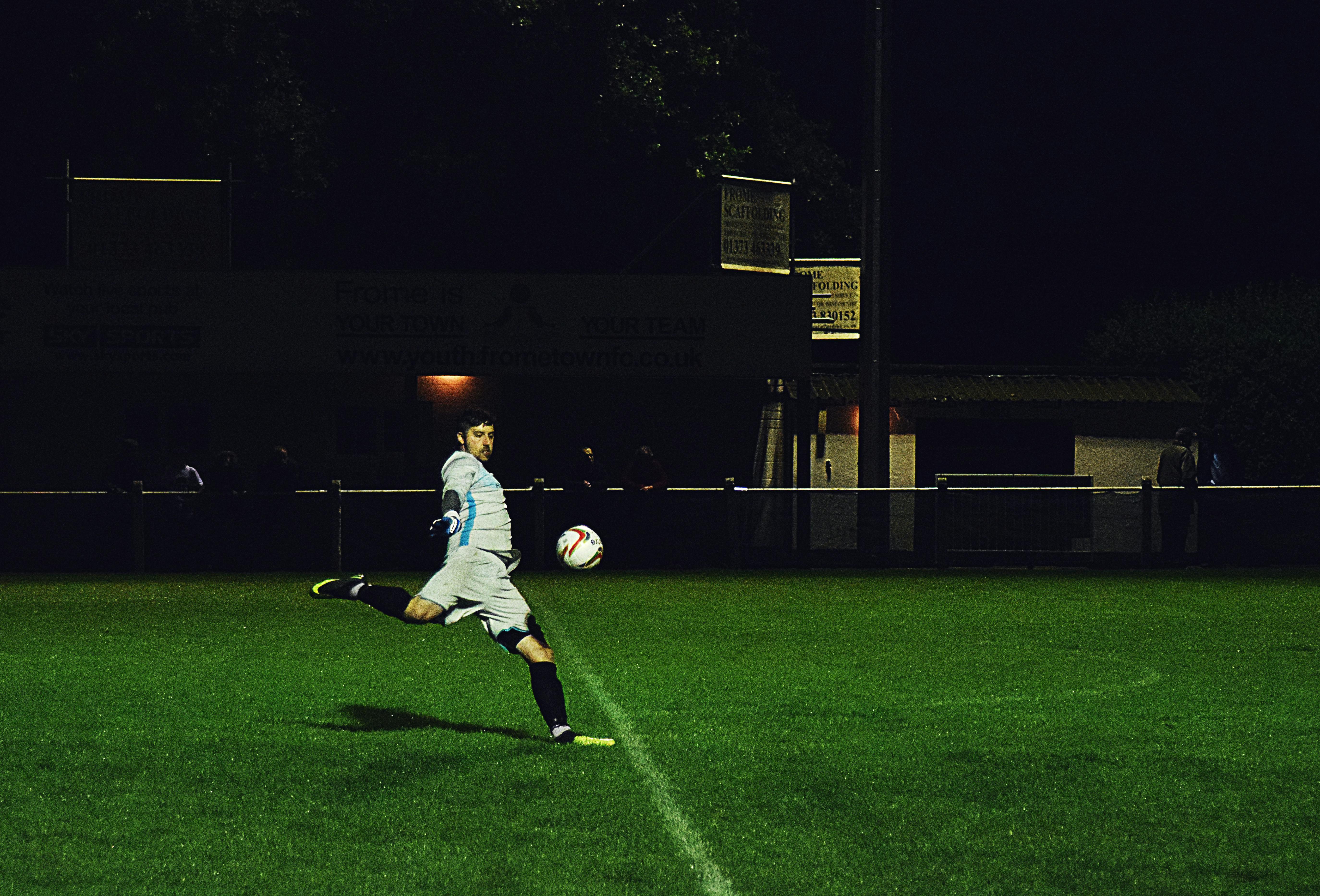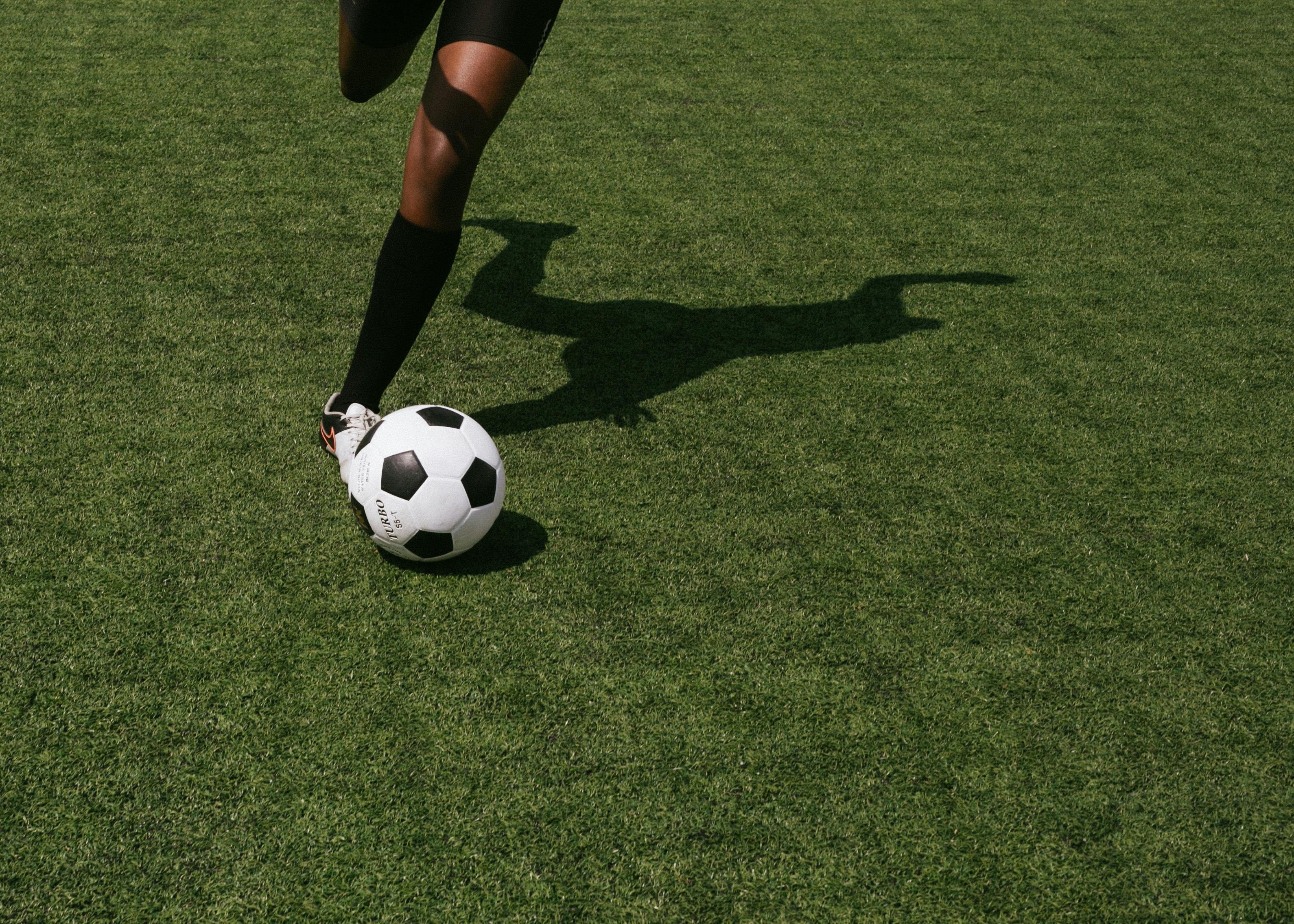Soccer is one of the most popular sports in the world, and it is known for its fast-paced action. One of the most impressive aspects of the game is how quickly players can kick a soccer ball. How fast is a soccer ball kicked? That depends on several factors, such as the power of the kick, the type of surface it’s kicked on, and even wind conditions. In this article, we will look at what factors influence how fast a soccer ball can be kicked and explore some record-setting kicks.A soccer ball can be kicked at a maximum speed of approximately 80 miles per hour.
Factors That Affect the Speed of a Kicked Soccer Ball
One of the most important skills in soccer is the ability to kick the ball with speed and accuracy. The speed of a soccer ball kicked by a player depends on several factors, including the strength of the kick, technique, and environmental conditions.
The strength of the kick is determined by how much power is applied to the ball. A strong kick will produce more velocity than a weak kick. The technique used by the player also affects how quickly the ball moves. For example, using toe-kicks or instep-kicks typically results in faster speeds than using heel-kicks or side-footing.
Environmental conditions can also play an important role in affecting ball speed. Windy conditions can cause a decrease in speed for a kicked soccer ball due to air resistance. Additionally, rain or wet fields can reduce friction, which can lead to an increase in ball speed when it is kicked.
Finally, even though it’s not directly related to kicking technique or environmental conditions, the type of soccer ball used can also affect its speed when kicked. A high quality soccer ball that is well inflated will provide more elasticity and therefore result in faster speeds than an old or poorly inflated one.
In summary, there are several factors that influence how fast a soccer ball travels when it is kicked by a player: strength of kick, technique used, environmental conditions and quality of the soccer ball itself. By taking all these variables into consideration and mastering their effects on ball speed, players can become better at kicking with power and accuracy.
Kick a Soccer Ball Faster
Kicking a soccer ball faster is a skill that all soccer players should strive for. It can often mean the difference between winning and losing a game. Fortunately, there are some techniques that you can use to help you kick the ball with greater speed and accuracy. Here are some tips for kicking a soccer ball faster:
The first tip is to make sure that your foot is in the right position when you kick the ball. You want to make sure that your foot is positioned directly behind the ball, and your toes should be pointed towards where you want to kick it. Additionally, your weight should be distributed evenly on both feet and your knee should be slightly bent.
The second tip is to use your lower body to generate power when you kick the ball. You want to make sure that your arms are held out in front of you for stability and balance as you drive with your legs, hips and core muscles to generate speed for the ball.
Finally, you want to practice visualizing where you want the ball to go before you actually kick it. This will help you focus more on accuracy as well as speed when kicking the ball. You can do this by imagining a target on the opposite side of where you are standing, then focus on hitting that target with each kick of the ball.
By following these tips, you will be able to kick a soccer ball faster and more accurately than ever before. With continued practice and dedication, kicking a soccer ball faster will become second nature.
Materials That Impact the Speed of a Kicked Soccer Ball
The speed of a kicked soccer ball is determined by the materials used to construct it. The type of material affects the weight, shape and even the texture of the ball. Several materials are used to create soccer balls, including leather, synthetic leather, vinyl and rubber. Each material has advantages and disadvantages in terms of its ability to absorb shock and resist wear-and-tear.
Leather is one of the oldest materials used for soccer balls and is still favored by many professional players due to its softness and comfort. Leather provides excellent grip in wet or dry conditions, allowing for greater accuracy when shooting or passing. However, leather is not as durable as synthetic leather or rubber, so it will need frequent replacement.
Synthetic leather is gaining popularity among amateur soccer players due to its affordability and durability. Synthetic leather can withstand more impact than leather but will not provide as much grip as natural leather does. Vinyl is another popular material for soccer balls because it offers good shock absorption and durability at a lower cost than other materials. However, vinyl balls do not provide as much grip as other types of balls do.
Rubber is often used for outdoor play due to its excellent water resistance and durability in wet conditions. Rubber also provides good grip on wet surfaces so players can maintain better control of their shots or passes when playing in rain or snow. The downside to rubber soccer balls is that they tend to be more expensive than other types of balls and may wear out faster due to their harder surface texture.
In conclusion, there are several materials that can affect the speed of a kicked soccer ball depending on their weight, shape and texture. Leather provides excellent grip but may need frequent replacement while synthetic leather offers better durability at a lower cost than other materials such as vinyl or rubber. Rubber balls offer good water resistance but tend to be more expensive than other options while also having a harder surface texture that may wear out faster over time.
Investigating the Physics Behind Kicking a Soccer Ball
Kicking a soccer ball is a skill that takes time to master, but it’s also heavily reliant on physics. The way a soccer ball moves after being kicked is dependent on the forces acting on the ball, such as the force of gravity and the force applied by the kicker’s foot. In order to better understand this phenomenon, it is important to examine the physics behind kicking a soccer ball.
When a soccer ball is kicked, it accelerates due to the force applied by the kicker’s foot. This force causes an equal and opposite reaction in the form of inertia, which is what makes the ball move in the opposite direction. As it moves forward, air resistance begins to act on it and slows it down until eventually coming to rest or bouncing off another surface.
The speed at which a soccer ball travels is determined by two main factors: how hard it was kicked and its mass. The harder that a soccer ball is kicked, the faster it will travel due to increased inertia from more force being applied by the foot. However, its mass also plays an important role as heavier balls are more difficult to move and will therefore travel slower than lighter balls when kicked with equal force.
The trajectory of a soccer ball is determined by both its speed and spin. If a player kicks with backspin then this will cause an upward trajectory as air resistance will act more strongly against one side of the spinning ball than another and lift it higher into the air. If they kick with topspin then this will cause a downward trajectory as air resistance will act against one side of the spinning ball more strongly than another and pull it downwards.
Finally, gravity plays an important role in how far a soccer ball travels after being kicked as well as its final resting place. As gravity acts constantly on any object with mass, it pulls them towards Earth’s surface which causes them to slow down over time until eventually coming to rest or bouncing off another surface. This means that how far and where a soccer ball goes ultimately depends on how hard it was kicked combined with gravity’s pull.
In conclusion, kicking a soccer ball involves many different forces acting on it such as inertia from forces applied by feet or spin applied by kickers; air resistance; and gravity pulling objects towards Earth’s surface which all work together to determine how fast, far, or high into the air a soccer ball travels after being kicked.

Measuring the Velocity of a Kicked Soccer Ball
Measuring the velocity of a kicked soccer ball accurately is essential for determining the success of a player’s kick. There are two ways to measure the velocity of a soccer ball: using a radar gun or using video analysis. The radar gun is the most accurate and direct method since it measures the speed of the ball directly as it passes by, while video analysis requires additional calculations to estimate the speed from its position in multiple frames.
Using a radar gun to measure the speed of a kicked soccer ball is quite simple. All that is required is to point the gun at the desired target and pull the trigger at the moment when it passes by. The radar gun will then display an accurate reading of how fast it was travelling, usually in kilometers per hour (km/h). This method is very reliable, but can be expensive and requires some practice to use correctly.
Video analysis can also be used to measure the velocity of a soccer ball. This involves recording multiple frames of video footage from different angles and then analyzing them using specialized software. This software can track how far and how fast each frame moves in relation to one another, allowing for an accurate calculation of overall velocity in km/h.
Both methods have their advantages and disadvantages when measuring soccer ball velocity, so it’s important to choose which one best suits your needs before attempting any measurements. Radar guns are more accurate but require more skill and money, while video analysis requires more effort but can be done with minimal equipment. Ultimately, both methods provide reliable results when used correctly, so it’s up to you which one you prefer.
Different Ways to Measure the Speed of a Kicked Soccer Ball
Measuring the speed of a kicked soccer ball can be tricky, but there are some methods that can be used to gauge the speed of the ball. One of the easiest ways is to use a stopwatch and measure the time it takes for the ball to travel a known distance. This method works best if you have access to a flat surface such as a field or court where you can easily measure distances. Another way to measure ball speed is to use a radar gun, which can measure its speed in miles per hour. This method is more accurate than using a stopwatch, as it takes into account factors such as spin and air resistance that might affect the ball’s trajectory. Finally, video analysis provides an even more precise way to measure ball speed, as it allows you to analyze multiple frames of video footage and calculate the precise velocity of the ball at any given moment.
In addition to these methods, there are other ways that can be used to estimate the speed of a kicked soccer ball. For example, one could observe how far away from its starting point the ball lands and use this information to calculate its approximate velocity. Similarly, observing how quickly and at what angle the ball moves off its path after being kicked will provide an indication of how fast it was traveling when it left its source.
No matter which method is used, measuring the speed of a soccer ball accurately requires practice and patience. It also helps if you have access to specialized equipment such as radar guns or video analysis software. With enough time and effort however, anyone should be able to accurately gauge the speed of their kicks with any one of these methods.
The Average Speed of a Kicked Soccer Ball
The average speed of a kicked soccer ball can vary greatly depending on the strength and technique of the kick. Professional players can kick a soccer ball with speeds up to 80 miles per hour. The average person, however, can only kick a soccer ball up to about 20-30 miles per hour. The speed of a kicked soccer ball also depends on the surface it is being kicked on and any external factors like wind or rain. Generally, the harder the surface, the faster the ball will travel. A dry grass field is usually ideal for allowing a soccer ball to reach its highest potential velocity.
The spin rate of a kicked soccer ball also affects its speed and trajectory. A player that puts spin on the ball will cause it to travel faster and farther than if they had simply kicked it straight ahead without spin. The spin rate also affects how well the ball can curve around obstacles or defenders in order to get closer to goal.
In conclusion, the average speed of a kicked soccer ball can range anywhere from 20-80 miles per hour depending on several different factors such as strength, technique, spin rate, and surface type. Professional players are able to kick balls with much higher speeds than amateur players which is why it is important for them to practice their skills in order to maximize their performance on game day.

Conclusion
The speed at which a soccer ball is kicked depends on several factors, including the power of the kick, the type of ball, and the surface on which it is kicked. On average, a professional soccer player can kick a soccer ball at speeds up to 80mph. However, some players have been known to reach speeds of up to 120mph. The speed of a soccer ball can also be increased by using specialized kicking techniques such as knuckleball or topspin. In addition, the use of specialized equipment such as kick trainers or power bands can help improve kicking strength and accuracy.
Overall, the speed at which a soccer ball is kicked depends on many factors and can vary greatly depending on the skill level of the kicker. Professional players have been recorded kicking soccer balls at speeds up to 120mph while amateur players may struggle to reach even half that speed. No matter what your skill level is however, with enough practice and dedication you can become an excellent kicker with great accuracy and strength.




